Fourvière is one of the most famous monuments in Lyon, not just owing to its majestic architecture, but also since this basilica is intimately linked with the city´s history.
At the start, when I had barely arrived in the city, Fourvière was one of the first things I visited. Months passed and had it not been for visits from my mum and friends, I wouldn´t have visited the basilica more than once. Visiting again allowed me to rediscover its beauty and splendor.
I wanted to find out more about the basilica´s history and its architecture, and so during the Journées du Patrimoine (a weekend where numerous visits to famous buildings and monuments are organised) I chose Fourvière as the top destination on my list for that weekend without thinking twice.
I saw that there were various guided tours and all of them, as well as being very interesting... were free! There was one, for example, about the stained glass windows in the cathedral, another about the symbolism used in the architecture and still another about Fourvière´s relevance in the history of Lyon. The tour named ´Visite insolite de Fourvière` was the one that grabbed my attention most of all: as the name suggests, it was a VIP tour which allowed you to access the gallery, the carillon and the roof of the basilica.
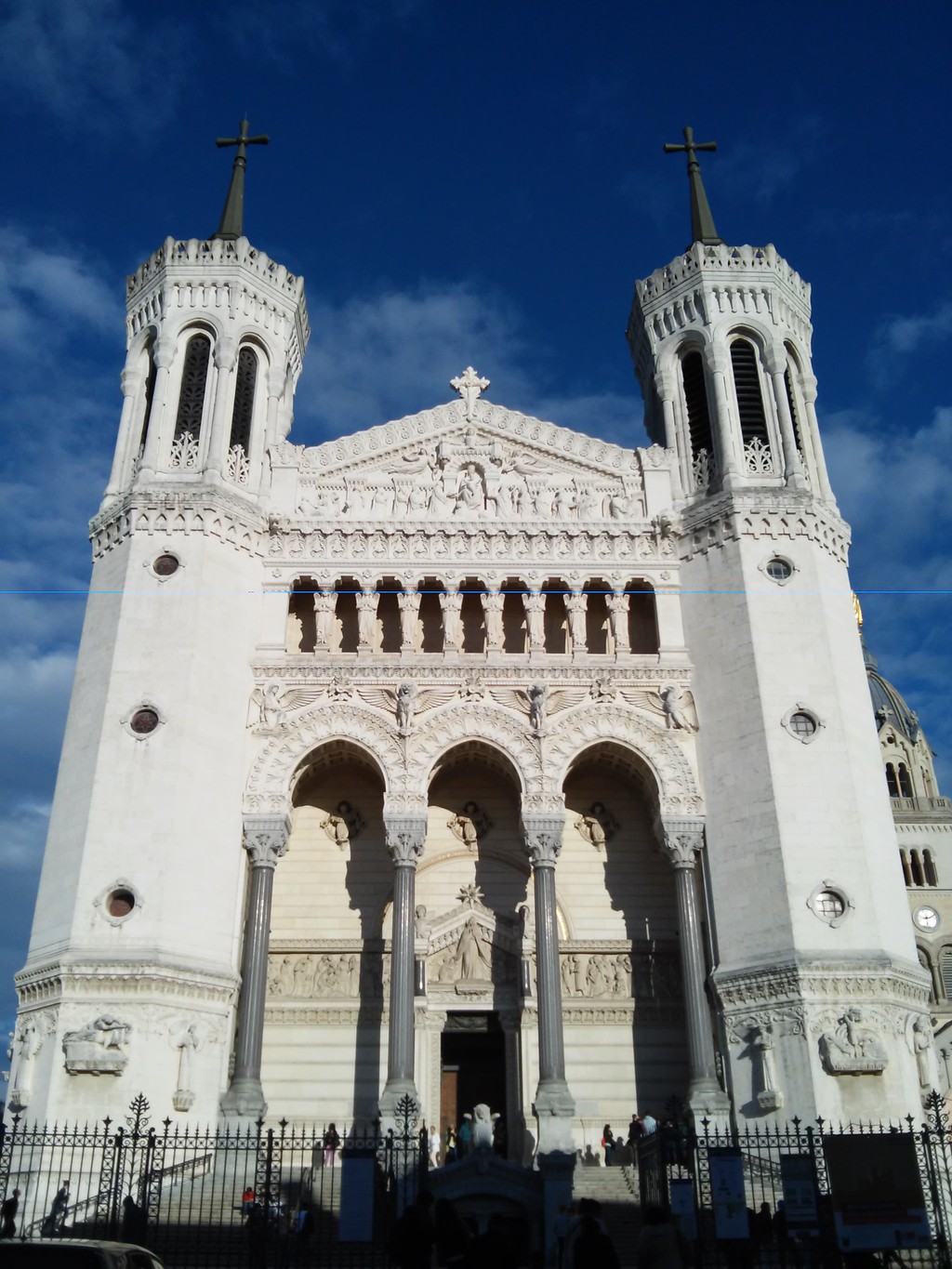
The main facade of the beautiful Basílica de Fourvière
Normally, this tour costs 6 euros, but since it was the Journées du Patrimoine, the visit was entirely free. This being said, you do have to sign up for it in advance. I wouldn´t know how this works however, as I just turned up for it and was very lucky as I arrived just in time for the last tour of the day. Also, the guides were super cool since one of them gave a tour to just me and three other people...it was a real treat: a rare tour around this famous basilica in a VIP group, and free! :D Three cheers for the Journées du Patrimoine! :D
If you visit the Fourvière and don´t have the good fortune of doing so during the Journées du Patrimoine, I recommend you pay the 6 euros anyway and go on the tour. The price is irrelevant when compared with the new, original view you will get of the basilica. Not all tourists have the opportunity to do it.;)
Itinerary of the VIP tour
The tour is divided into four parts: the grand gallery, the architects´s lounge, the carillon and St Michel´s terrace. Normally the VIP tour also includes access to the observatory tower, from which you can enjoy incredible views of the city. Due to organisation and time limits however, we weren´t able to go up the tower on this occasion. Everything else we saw though was marvellous and left me feeling amazed. :D
The Grand Gallery
To access the grand gallery, we entered through a side door and climbed a spiral staircase until we reached the top. From the grand gallery there is a view of Fourvière´s interior from high up. I don´t really remember the explanation for the existence of the gallery (I was too distracted taking photos :P) but I am quite sure that this gallery was reserved for important and distinguished people.
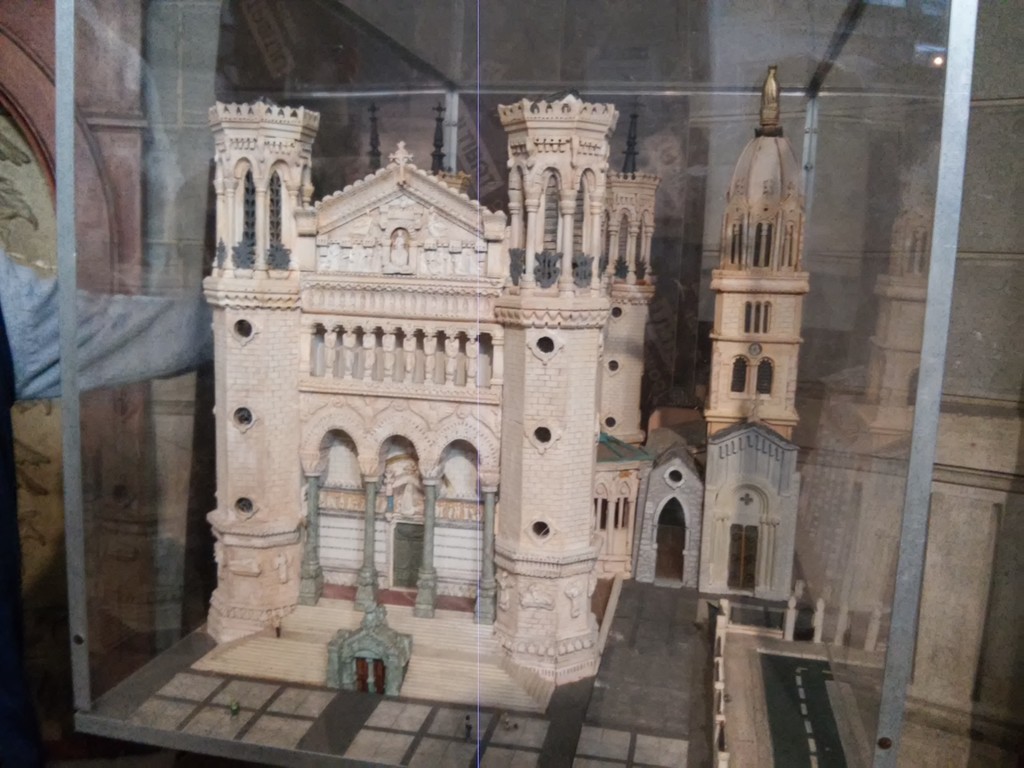
A mock-up design of the Basílica de Fourvière

View of the stairs leading to the grand gallery, the architects´s lounge, the carillon and St Michel´s terrace

Corridor of the grand gallery
In itself, the grand gallery is not extraordinary, in the sense that the architecture here isn´t out of the ordinary. The photo proves this. It is in fact just smooth cement walls. What is interesting though is the view of the Fourvière´s interior: the view allows you to better appreciate the details of the ceiling.
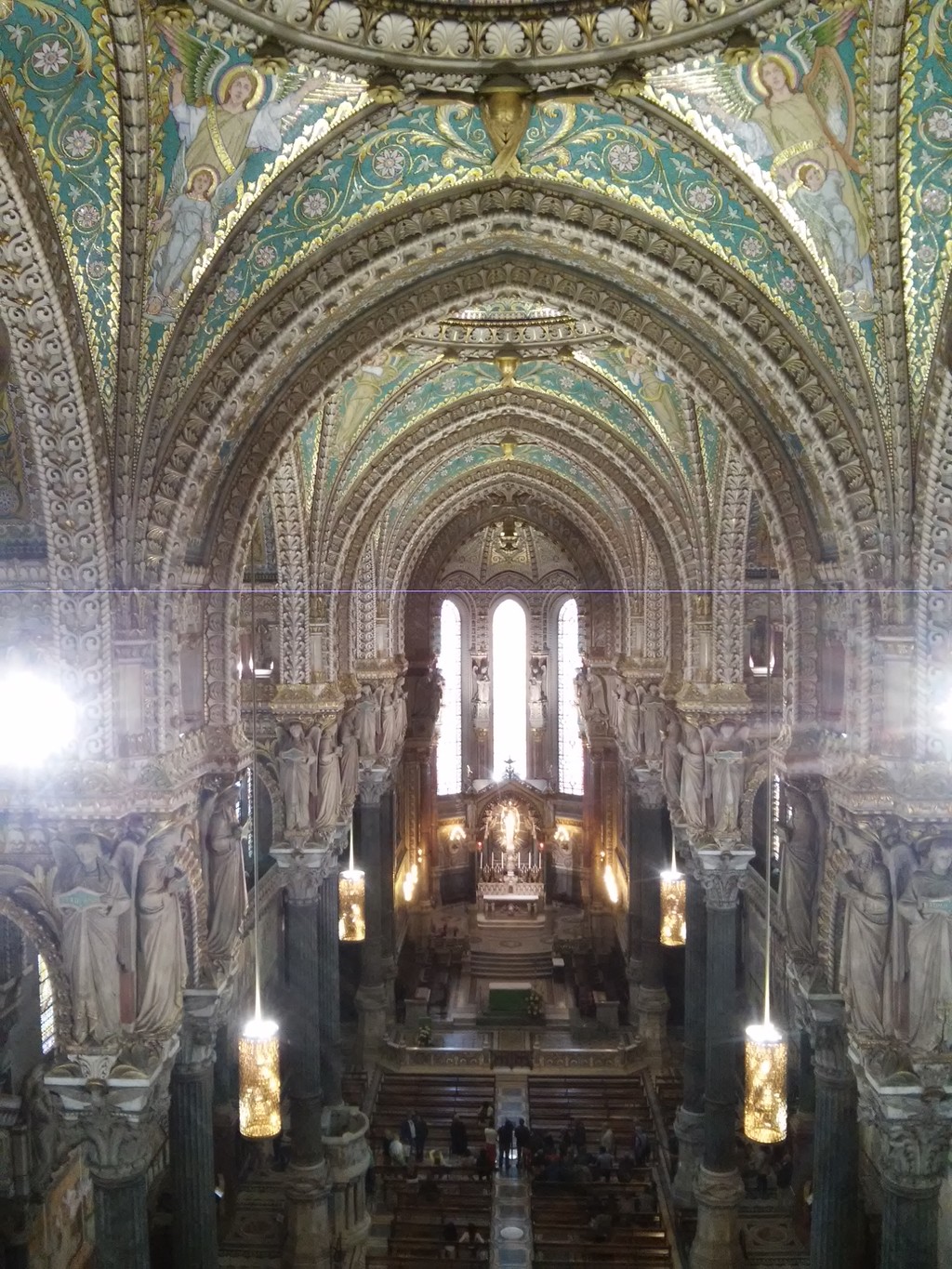
Views from the grand gallery. I had never noticed that there was a balcony, until I got to climb up there myself!

All these small details aren´t painted on, but are instead tiny mosaics. I really felt privileged to be up there. Not everyone can say they have seen this part of the Fourvière :)
The guide told us that the distance between the floor and ceiling of the Fourvière is 27 metres. It´s truly gigantic!
The architects´s lounge
Here you can see full-scale models of the sculptures and other details of Fourvière. There are also some sketches and one or two broken parts of the basilica.
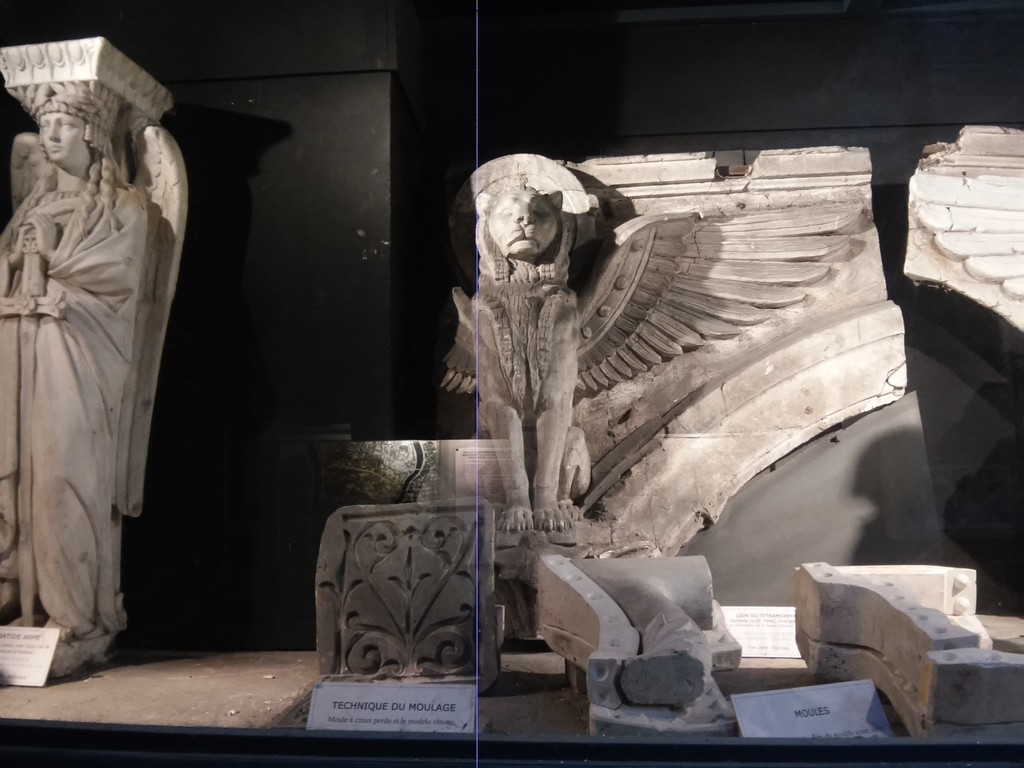
Display cases in the architects´s lounge. The angel which can be seen to the left of the photo is one of the sculptures which was planned but never built for the basilica.
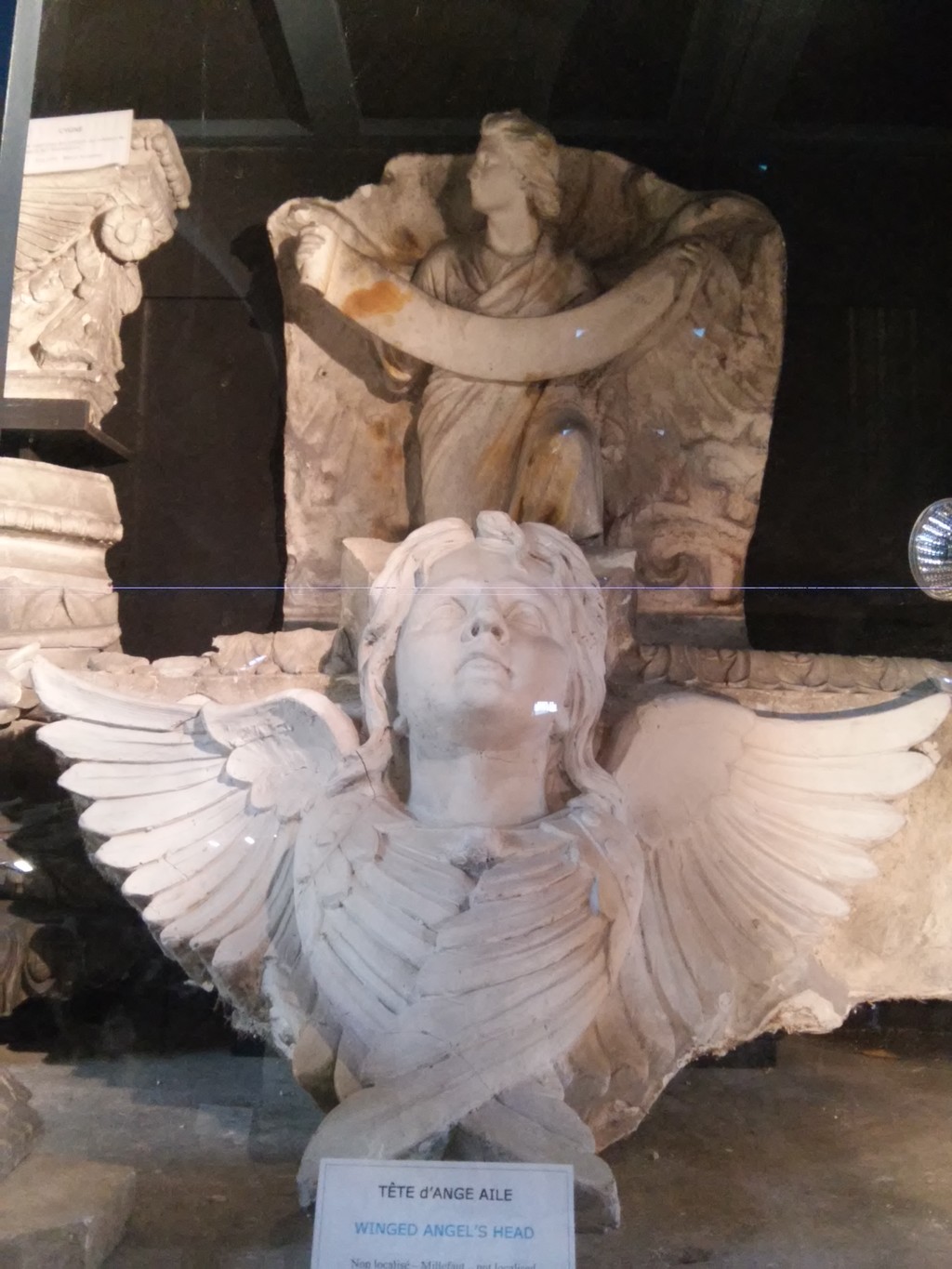
When we were in the architects´s lounge, we were the only ones there. Since we were the last group and there were only four of us, the guide gave us extra time to look at the displays and take as many photos as we liked.
The Carillon
Carillon - I didn´t know this word existed until I went on this tour. A carillon is a tower which houses several bells shaped so they are able to play out a melody together. ♫ Ding, dong, ding, dong ♫ Fourvière has its own carillon and during our visit, we had the opportunity to see it. I had no idea that the Fourvière had such a thing.
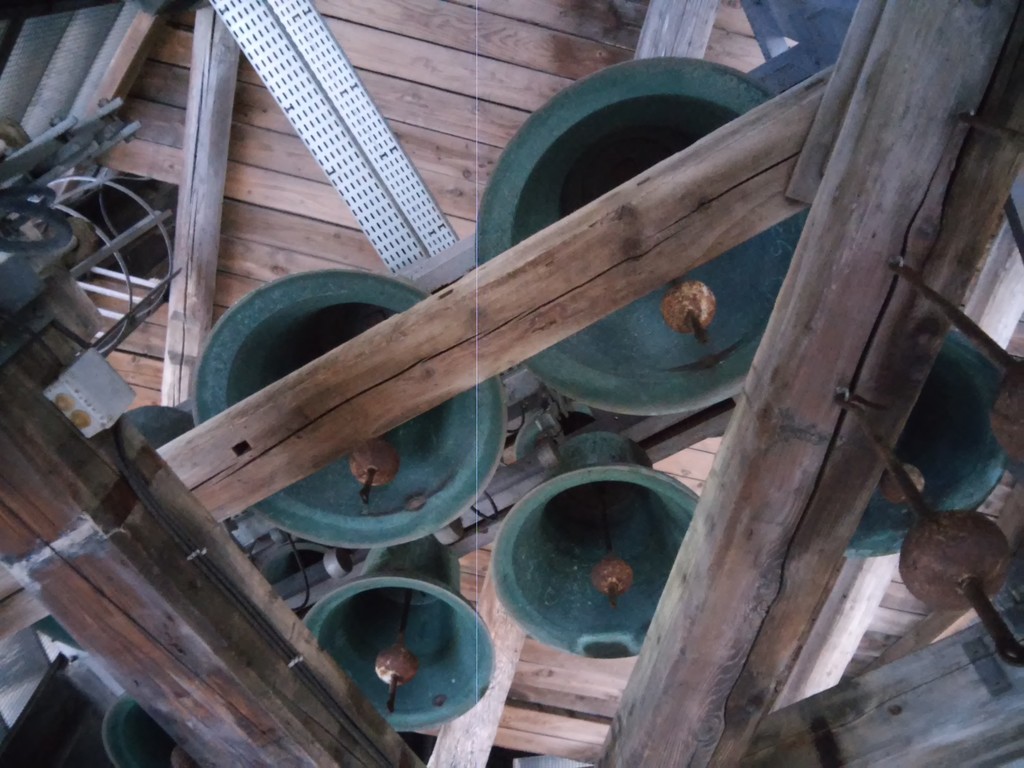
View of the carillon bells
There are twenty-three bells, all different sizes and tones. Almost every one has a female name: Marie-Thérèse, Caroline, Zoe, Petronille, etc. Marie-Thérèse is the ´lightest`, weighing 500 kilos. Caroline weighs the most at 1, 200 kilos.
During the tour, we visited this place and also heard the bells ringing when we were there. We came at just the right time. :D It´s strange, because I´d never heard the bells of Fourvière before. The first time I heard them was on this VIP tour.

St Michel´s Terrace
In addition to the extremely interesting explanations given to us by our lovely guide (thanks to whom I was able to write a complete article! :D), the best part of the tour was being able to access St Michel´s Terrace (St Michael in English).
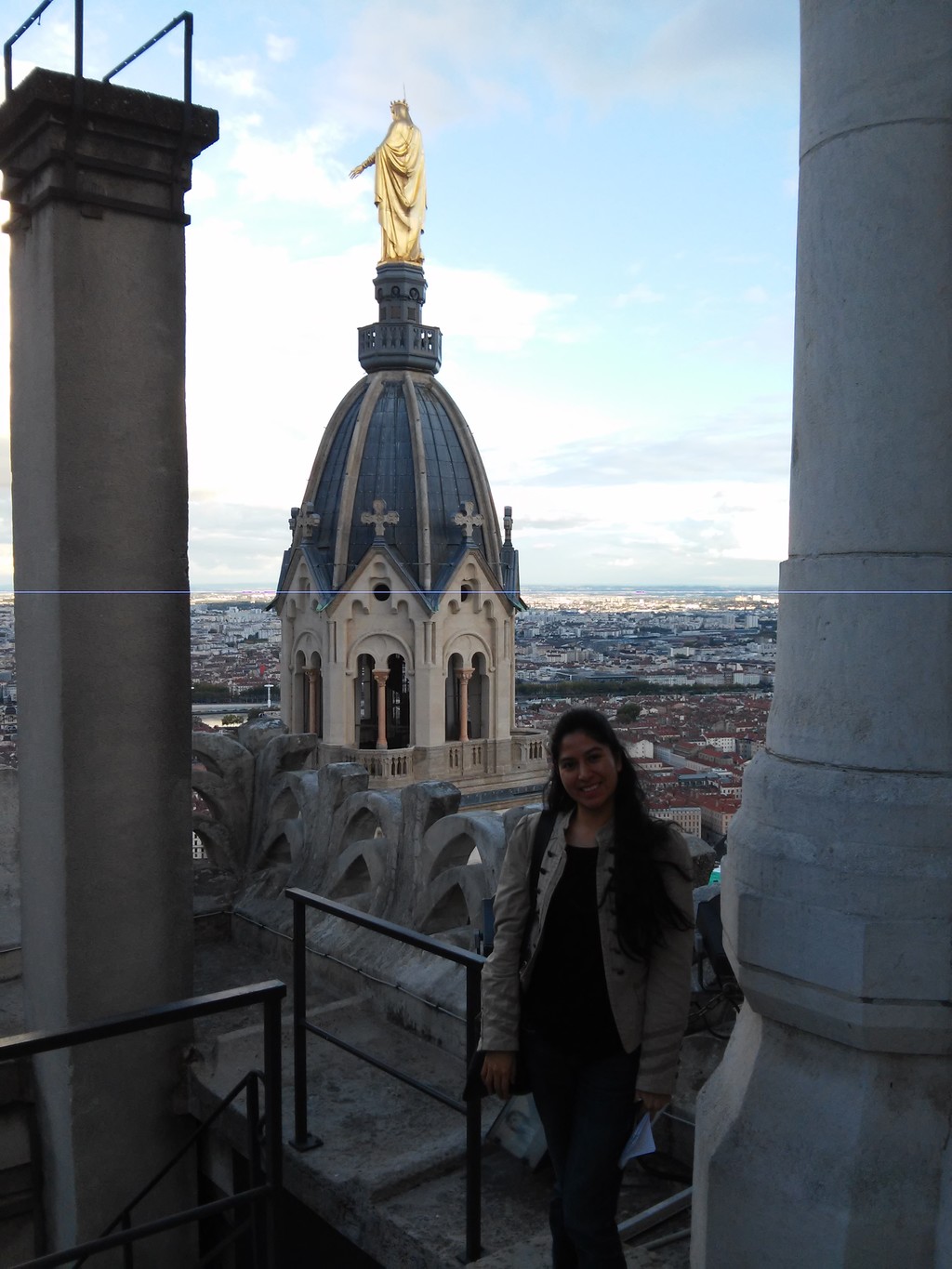
Me on St Michel´s Terrace :D
From the hill of the Fourvière there is a beautiful view of Lyon, and the landscape is even more impressive and magnificent when viewed from this terrace. It´s spectacular. Since we were the last visitors for the day, we were able to gaze at the city for as long as we liked. Our guide didn´t rush us at all. On the contrary, they told us: ´Take your time, and take advantage of this opportunity since it´s not every day you get to look out from the highest point of Fourvière. ´
If you are encouraged to do this tour by my article, I´m sure you´ll enjoy it just as much as I did :)

Panoramic view from the top of Fourvière
This terrace is so named due to the metal sculpture of the archangel Michael which stands in its centre.

Statue of archangel Michael

Photo of the stairs we descended from St Michel´s terrace
Some information on the basilica´s architecture
Inaugurated at the end of the nineteenth century, in 1896 to be precise, this church is a ´private` one: that is to say, it belongs neither to the diocese neither to the state, but instead to the Fourvière Foundation. Since it was built using money from donations, its construction could not be completely finished with everything which had previously been planned fully incorporated. The guide explained to us that there were sculptures which were not constructed due to lack of funding. (This being so, it´s worth noting that a large amount of money was donated since as we can see, it is a very impressive cathedral, and you would never imagine for a second that there were any ´incomplete´ details).
La Basílica de Fourvière is the work of Pierre Bossan (and as an interesting piece of trivia, this architect was seventy years old when he designed this emblematic church in Lyon). Bossan was a famous Lyonese architect who designed the Church of Saint Georges and the Maison Blanchon, among other places. These two buildings can be found in the Old Town and are very much worth visiting. Personally, I really enjoyed the Maison Blanchon due to the incredible details of its facade. It also has a beautiful doorway! (yes, it´s clear I love doorways, haha. )
Interesting facts
- The columns at the Fourvière´s entrance were sculpted from marble in Italy and afterwards transported to France to be installed in the basilica.
- Despite the fact that France is a lay state where religion is clearly separated from the government, Fourvière is so deeply intertwined with the history of Lyon that during the annual pilgrimage on the 8th September, they make an exception to this rule: the Mayor of Lyon takes part in the procession and accompanies the archbishop, who blesses the city from the heights of the Fourvière. Last year I saw both the archbishop and the mayor in the procession.
- Fourvière has a crypt (in this case, more like a type of chapel) which is dedicated to Saint Joseph. The initial idea of Bossan, the basilica´s architect, was that the procession would leave from Cathedral Saint-Jean (which is at the foot of the hill, in the Old Town), pass through the crypt and finally end in the golden interior of the church. Why this particular route? The crypt represents the darkness (I wonder why Bossan gave this role to poor old Joseph! ) and passing through this darkness to arrive in the golden interior of the church was intended to represent the triumph of good over evil.

- There are radio antennae in the higher parts of the basilica... moving with the times! :P
- If you are interested in the history of Fourvière, you may want to consider the possibility of becoming a volunteer guide in the basilica. I find this a very interesting idea, since they provide you with four months´s free training. During these four months, you attend conferences and seminars every Saturday about the history and the architecture of this monument. In exchange for this, at the end of your training you are required to give a minimum of two tours per month for at least one year.
Opening hours
Access to the side terraces in the Fourvière is available Monday to Sunday from 7am til 9. 30pm. The basilica itself is open to the public from 7am til 7pm Monday to Sunday.
Ah, I almost forgot: Fourvière also has a museum, two souvenir shops, a restaurant, toilets and parking facilities. I´ve never been to the restaurant, but I´ve been told at least that it´s good, serves tasty food and isn´t too expensive.
How to get there
To get to Fourvière, you have the options of walking there or taking the cable car. It depends on how much time you have at your disposal, how cold it is or lazy you´re feeling that day.
If you´d like to take the long path lined with flowers (meaning, walking there), a good option is to climb the hill via the Jardin du Rosaire.
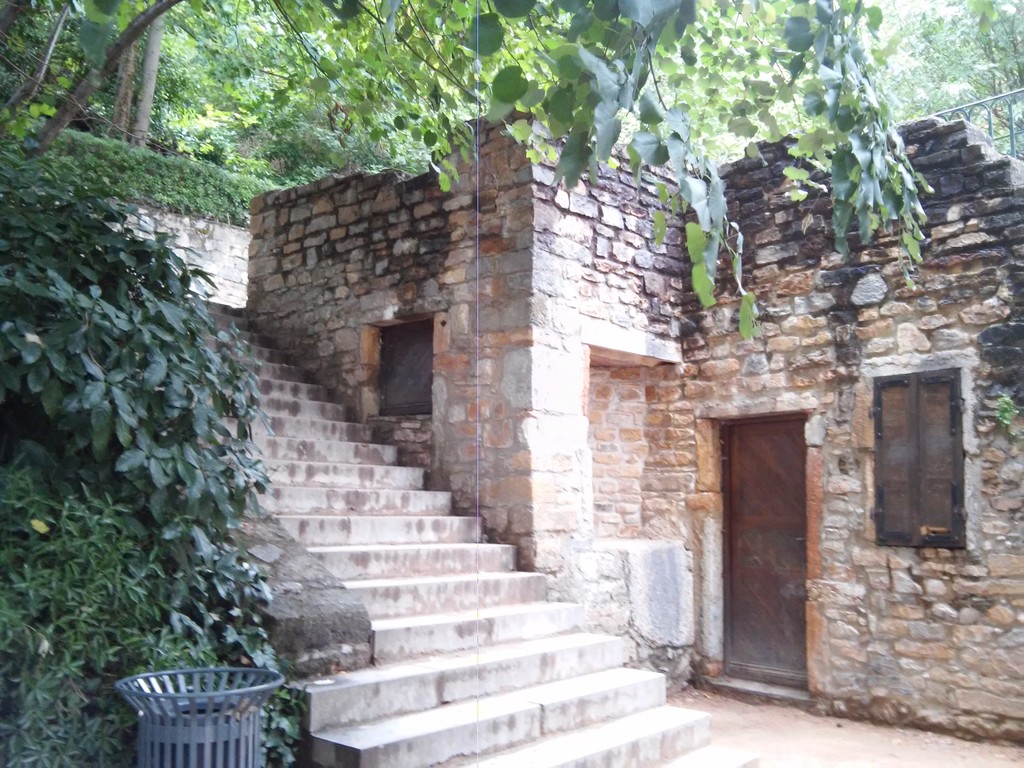
Steps on the path through the Jardin du Rosaire
If you don´t have much time (or just don´t feel like it :P), you could also just go to the Vieux Lyon station, on the D line, and take the cable car from here to Fourvière. It will take you directly to the church´s entrance. Mind you, I remember the times I used the cable car at the weekends, and I almost lost my patience entirely! Be warned, there are so many tourists that you sometimes have to wait up to twenty minutes to be able to board the cable car. I won´t even begin to tell you what it was like during the Festival of Lights! :P

Ladies and gentlemen, I present to you... the first cable car in the world! In Lyon! ^^
A very interesting fact is that the cable cars in Lyon were the first ones in the world. It was here in Lyon that this method of transport was first invented and constructed. Lyon has two cable cars: the Saint Just cable car and the Fourvière.
Conclusion
After a very lengthy article, there´s not much left for me to do apart from recommend that you visit this architectural jewel. Don´t do it like I did, which is settle for visiting the basilica just once. Go back time and time again, take advantage of the events put on there which enable you to discover a little more (or a lot more! ) about this great symbol of Lyon: the magnificent and majestic Basílica de Fourvière.

View of the city of Leon - pretty, right? :)
 What to see Lyon,
Lyon,
France
What to see Lyon,
Lyon,
France






























































